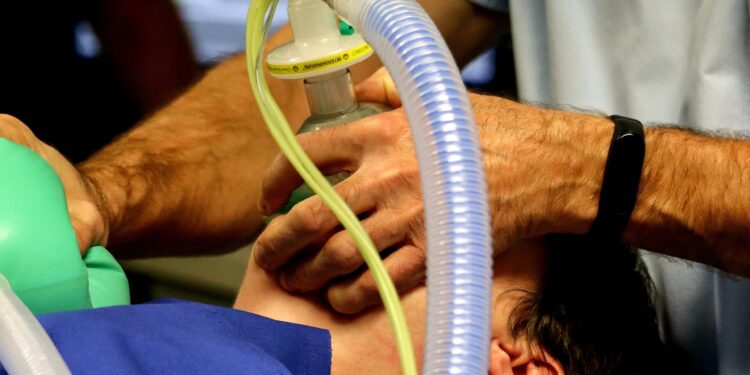Credit: Pixabay/CC0 Public domain
A multicenter study led by UMC Amsterdam and conducted in nine Dutch intensive care units (ICUs) showed that adapting a computerized decision support system (CDSS) to the ICU environment reduced significantly increase the number of high-risk drug combinations administered to ICU patients. This also improved the monitoring of intensive care patients when it was not possible to avoid such combinations and reduced the length of stay of intensive care patients. This study is published in The Lancet.
“Not more, but fewer and more relevant alerts issued by a CDSS make such a system more valuable to healthcare providers and patients,” says Ameen Abu-Hanna, professor of medical informatics at UMC d ‘Amsterdam, principal investigator of the study.
Combining two or more medicines at the same time may result in either an increase or a reduction in the effect of the medicines involved. This can result in serious harm to patients. Drug combinations are more common in intensive care because ICU patients are seriously ill and are often treated with multiple drugs at the same time.
Fewer, but more impactful alerts
CDSSs are used to alert critical care physicians of potentially risky drug combinations. These systems notify doctors via alerts when prescribing medications. However, these systems are not properly adapted to the ICU environment, resulting in an abundance of alerts that are not clinically relevant, leading to alert fatigue.
Research shows that more than 80% of alerts about potentially risky drug combinations are rejected by ICU doctors, including the most important ones. This significantly diminishes the value of CDSS in daily clinical practice and compromises patient safety.
“Patients in intensive care are seriously ill and are often treated with concomitant medications. At the same time, patients in intensive care are monitored extensively and continuously. Therefore, it is important to adapt the CDSS to the intensive care environment to prevent alert fatigue and improve patient safety. in the ICU,” says Joanna Klopotowska, assistant professor and co-author.
Shorter stay in intensive care
Unlike current blind CDSSs, nine ICUs over a period of time received CDSS carefully tailored to the ICU environment. This bespoke system only displayed alerts for drug combinations considered high risk or requiring additional monitoring, as defined by a national panel of intensive care physicians and hospital pharmacists.
Alerts for low-risk drug combinations have been disabled. As a result of this adjustment, 12% fewer high-risk drug combinations were administered to patients in intensive care, and monitoring of possible side effects related to high-risk drug combinations was improved. The stay of patients in intensive care has also been shortened.
This study shows that adapting a CDSS to the ICU environment improves ICU patient safety. By alerting only where it matters, intensive care doctors have been able to better recognize dangerous drug combinations. This approach may also be valuable for other patient groups such as neonatology, pediatrics and oncology.
Currently, many hospitals use CDSSs without tailoring them to their specific patient groups, and the effectiveness of the systems is rarely examined.
“We hope that our study will inspire and stimulate hospitals to take a more critical look at all alerts that healthcare providers receive through such systems. This will benefit patients and healthcare providers,” says Klopotowska.
Ripe fruit
Even intensive care units that did not participate in the study can now easily adapt their CDSS and make it more efficient. These adjustments can be made manually in existing systems and require minimal effort. To this end, the researchers published two lists.
A list of high-risk drug combinations in the intensive care unit, for which alerts should be enabled, and a list of low-risk drug combinations that do not require alerts.
“Adapting ICU CDSSs is an easy solution that all ICUs in the Netherlands and beyond can benefit from, they do not have to reinvent the wheel themselves,” adds Tinka Bakker , at the time of the study of the doctorate. candidate and co-author of the study. On December 7, 2023, she defended her thesis at the University of Amsterdam on the adaptation of CDSS to the intensive care environment.
More information:
The effect of computerized decision support alerts adapted to intensive care on the administration of high-risk drug combinations and their monitoring. A cluster randomized stepwise trial, The Lancet (2024).
Provided by the University of Amsterdam Medical Center
Quote: Study shows computerized decision support system reduces high-risk drug combinations in intensive care patients (January 20, 2024) retrieved January 20, 2024 from
This document is subject to copyright. Apart from fair use for private study or research purposes, no part may be reproduced without written permission. The content is provided for information only.



